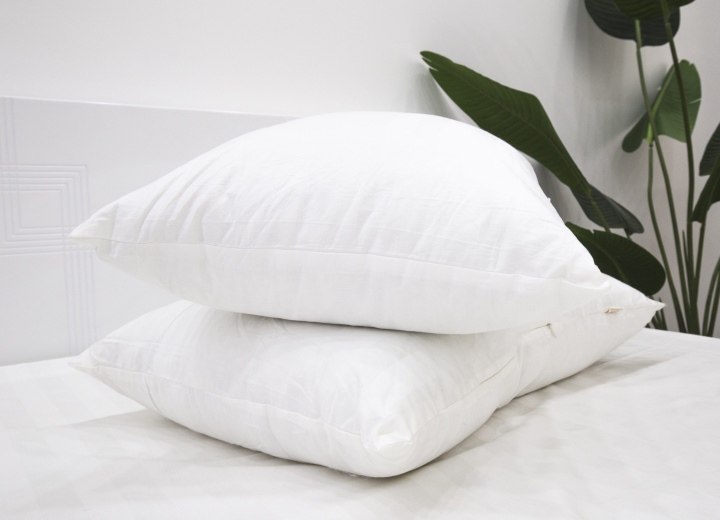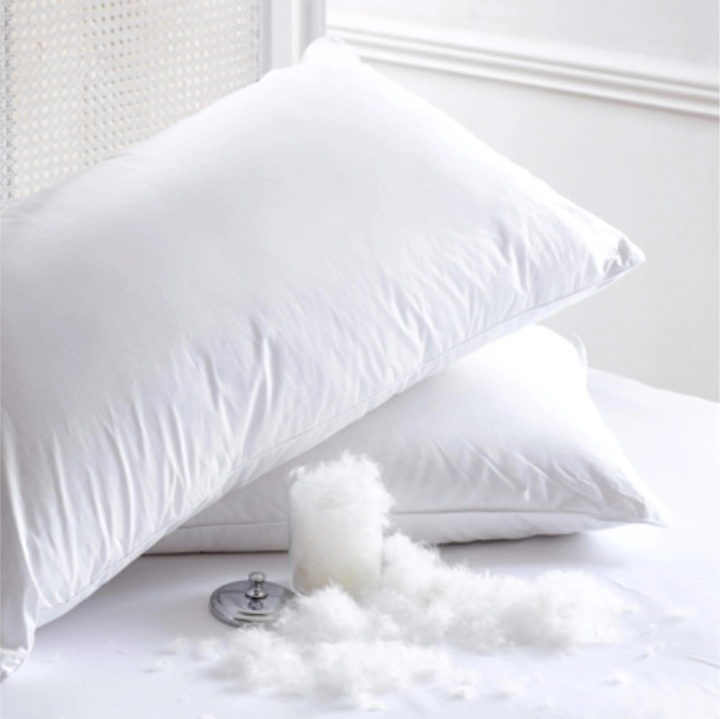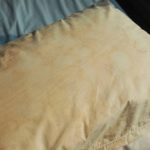Many families are only concerned with keeping their pillows clean and changing the pillowcases regularly, but they pay little attention to the pillow filling. In fact, many people use the same pillow for years without replacing it, which is extremely unhealthy and can even lead to unknown illnesses.
How often should you replace your pillow filling?
There is no definitive answer to this question because the level of dirtiness of the pillow filling varies from family to family, from user to user, and it depends on the material of the pillow. Nancy Rothstein, a sleep expert in the United States, suggests a way for you to determine if it’s time to get rid of your pillow filling: “If your pillow is made of latex, try folding it in half. If the pillow cannot bounce back and return to its original shape, it’s time to throw it away.”
On the other hand, Dr. Michael Breus, a sleep psychologist, advises: “If your pillow is filled with synthetic fiber, you should replace it every six months. For pillows made of memory foam or any other type that supports body contouring, you should replace it after about 18 – 36 months.”

How often should you replace your pillow filling? It depends on the type of pillow.
In addition, you can determine when to replace your pillow filling based on your own perception. A good pillow should fill the gap between your neck and shoulders. If your current pillow fails to do this or if it causes pain in your shoulders and neck when you wake up in the morning, then it’s time to replace it.
However, even if the pillow is not lumpy and still looks good on the outside, you should still pay attention to replacing it regularly, and not continue to use it year after year. Pillows are items that you come into contact with every day, and you even press your face onto them to breathe. After a period of use, pillows accumulate dust, dead skin cells, bacteria, and dust mites, which can be harmful to your health.
If you can’t remember exactly the specific advice from experts on how often to replace your pillow filling, you should default to replacing it every 1-2 years, and definitely not using the same filling for more than 3 years. You should wash and sun-dry the pillow filling every 3 months when there is strong sunlight. As for the pillowcase, you should wash it clean every week.
The effects of using old pillow filling
According to a study conducted in the UK, after 2 years of use, a pillow will have 1/3 of its weight composed of: dirt, dust mites, dead skin cells, bed bugs, and other residues… These are the factors that cause allergies, sneezing, runny nose, coughing, red rashes, itchy cheeks, or even exacerbating asthma.

A cotton pillow can contain dirt or secretions from the body, dead skin cells.
In addition, using old pillow filling will cause your skin to become infected and break out. If you have persistent acne on your face and can’t determine the cause, it’s likely that the culprit is the dirty pillow you’re sleeping on.
Especially, the quality of the pillow will gradually decrease over time. An old pillow will lose its original elasticity and support. It often becomes lumpy over time and cannot fill the gap between the head and shoulders when lying down. Pillows like this can strain your neck, spine, or even worsen your headaches.
According to VTC.vn


































